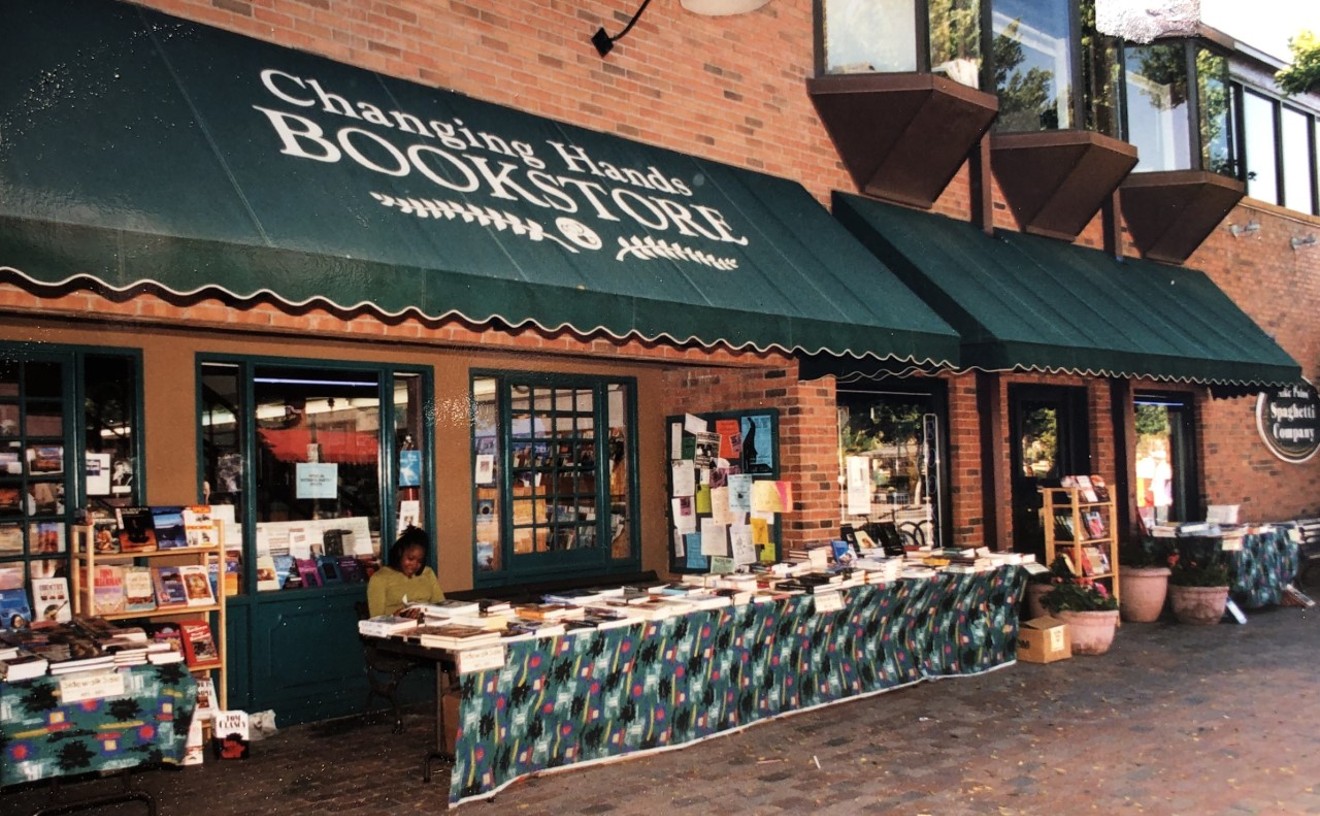Americans these days are bombarded with a steady stream of advertisements, television programming, social media, and online offerings. Screens deliver images at airports, restaurants, doctor offices, gyms, stadiums, and even gas stations. Saturated in visual culture, we've grown accustomed to tuning out much of what we see.
That's the cultural context for "13 Works You'll Be Lucky to See This Summer," the current exhibition at Lisa Sette Gallery in midtown Phoenix, and it lures lackadaisical lookers with works that reward the act of slowing down to see them. Sette reminds gallery-goers that seeing should be a deliberate act while affirming the role of art spaces in helping cultivate the practice of mindful seeing.
The exhibition features a diverse assortment of works, from sculpture to photography, that inspire viewers to go beyond the surface of what they see, to look past the small scope of their own lives, and to recognize that things aren't always what they seem. It includes works by 13 artists, including four not represented by Lisa Sette Gallery, so it's an opportunity to experience pieces you wouldn't otherwise encounter in this venue.
After descending a short flight of stairs into Sette's partially subterranean space, viewers see Landscape Part III — Dwelling in the Mount Fuchun (2008) by Chinese artist Yao Lu. From a distance, it looks like a beautiful mountain landscape painted during China's Song Dynasty (960-1279). But closer inspection reveals an image of rubbish dumps covered by the green netting prevalent in parts of China's rapid development. Lu wants people to look past the hype about economic growth to see the damage that development is doing to the environment. By tricking the eyes of his viewers, he reminds them to look more carefully at subsequent images placed before them.
Belgian artist Frieke Janssens achieves something similar using entirely different means. Convinced that adults weren't recognizing the absurdity of smoking cigarettes, Janssens decided to set smoking in another context that would jar viewers into seeing it anew. His "Smoking Kids" series of 15 photographs shows children styled with retro hair, clothing, and accessories smoking what appear to be cigarettes (the artist actually used sticks of chalk and cheese with wisps of smoke from incense and candles). "13 Works" includes two of these photographs, titled Cigarillo and Ringlings (2011). They're visually arresting, in part because viewers feel, while gazing into these children's eyes, that they simply can't be seeing what's clearly right before them.
Local artist Saskia Jorda, who received the 2015 Phoenix Art Museum Contemporary Forum Award, takes viewers on a different sort of visual journey. Her commanding Cartograms of Memory installation, created with industrial felt and cord, is part of a body of work developed in 2010 and first shown at Modified Arts in the Roosevelt Row arts district. It is a fictional map in sculptural form that references what the artist calls "the experience of migration, displacement, and the finding of a new sense of place." Its appearance varies each time it's installed, depending on the size and nature of the exhibition space, reflecting the immigrant experience of trying to fit in. Its many layers, twists, and turns suggest the need to look beyond stereotypes and the rhetoric of immigration to see the complexity of individual lives and trans-border journeys.
"13 Works" also includes pieces by Rachel Bess, Maximo Gonzalez, Siri Devi Khandavilli, Mayme Kratz, Carrie Marill, Reynier Leyva Novo, Luis Gonzalez Palma, Gregory Scott, and Xawery Wolski — in addition to the late French photographer Pierre Louis Pierson. With each, a common mental mantra reverberates: See actively, not passively. See broadly, not narrowly.
Novo's wine glasses (The Glass Kiss II, 2015) etched with the images of Raúl Castro and Barack Obama suggest the need to step back and see the relationship of Cuba and America in new ways. Khandavilli's large bronze sculpture (Darpana Sundari (Beauty Holding a Mirror), 2014) setting a glamorous poodle head atop a vamped-out Hindu goddess prompts viewers to take a long, hard look at American's über-commercial celebrity culture, which elevates the self (and those proverbial "selfies") to near-deity status.
In setting these works before us, Sette reinforces the role of art in challenging the way we see both ourselves and the broader cultural context of our lives. Sometimes magnifying glass, sometimes mirror, sometimes kaleidoscope — good art always sharpens our will to see and helps us see in new ways.
So though you'll be lucky to see these works, it's their power to affect your way of seeing once you've left the gallery that may prove to be the greater good.
"13 Works You'll Be Lucky to See This Summer" continues through Saturday, August 29, at Lisa Sette Gallery, 210 E. Catalina Drive. For more information, call 480-990-7342 or visit www.lisasettegallery.com.











